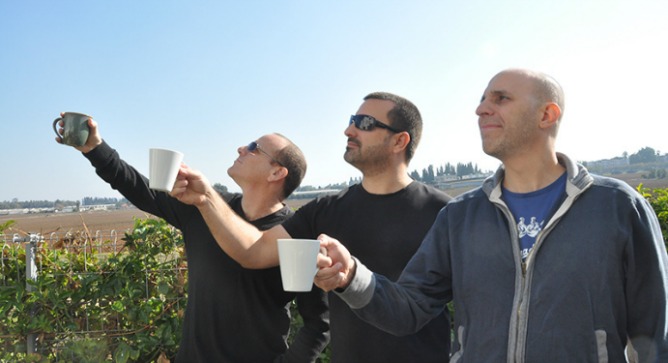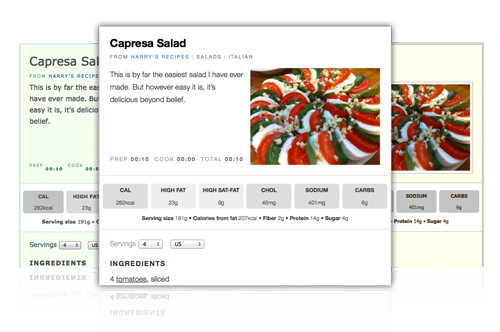Ofir Shahar combined his lifelong love of cookery with his acquired expertise in natural language processing to cook up Kitchenbug, a made-in-Israel plug-in that automatically formats bloggers’ recipes and tacks on a wealth of nutritional information plus keyword tags to get the creation at the top of a Google recipe search.
This is no small potatoes: Recipes are the second biggest online search category, accounting for two billion searches per month.
Spread the Word
• Email this article to friends or colleagues
• Share this article on Facebook or Twitter
• Write about and link to this article on your blog
• Local relevancy? Send this article to your local press
“Food bloggers are the second largest community in the blogosphere,” says the 40-year-old Shahar. “With our plug-in, when bloggers want to add a recipe to a WordPress post, they just click a button to open a pop-up window, type in the recipe, click ‘post’ and it’s embedded along with all the functional elements.”
Soft-launched in November 2012, within three months nearly 100 bloggers were using Kitchenbug, and the recipes generated with the Israeli technology were getting about half a million views per day.
“Bloggers love this free plug-in,” says Shahar.
And so does Microsoft. In December, Kitchenbug was accepted into the second class of startups in Microsoft Israel’s four-month Accelerator for Windows Azure, based in Herzliya Pituach.
“Microsoft auditioned many hundreds of startups and picked up 13,” Shahar tells ISRAEL21c. “They give us facilities, mentoring, workshops, classes, lectures — exposing us to experts around the globe with knowledge and ideas about fundraising, business development, marketing and everything else we need to learn.”
The culmination of the accelerator program in early May will be a public Kitchenbug launch in California’s Silicon Valley, preceded by a local launch at the end of April.
Information and functionality
Cooking since he was 10, Shahar learned natural language processing (NLP) during his military service in the prestigious 8200 Intelligence Unit. He combined his two talents about seven years ago with a rudimentary piece of software to analyze recipe ingredient lists linguistically.
Noting how everyone was starting to share ideas and content through social media, he then created a website to share recipes with friends and family.
“This is where the seeds of Kitchenbug got planted,” he says.
Working with two friends — chief operating officer Dror Daliot and chief marketing officer Tal Rosenberg — Shahar developed a recipe analysis engine. It extracts all the ingredient and instructional details and then calculates the nutritional value using information from the US Department of Agriculture database and Kitchenbug’s own nutrition database, updated daily by registered dietician Ramon Einav, one of the company’s team of eight.
Each ingredient is hyperlinked. Click on it, and a bubble instantly appears displaying encyclopedic information about the food.
Reinventing the digital recipe
Kitchenbug also labels the recipe by category according to US Food and Drug Administration guidelines – for example, healthy, fat-free, kosher, good for diabetics, safe for people with gluten sensitivity or lactose intolerance.
Users searching for appropriate recipes won’t get overloaded with irrelevant results, and can choose to stay away from labels such as “high cholesterol” or “high in saturated fat.”
“Let’s say you love pasta and you only eat kosher. A recipe for pasta with shrimp would not fit your requirements. If a technology is to provide relevant information, it must understand that shrimp is not kosher, so you won’t want this recipe,” Shahar explains.
And because cooks often need to adjust amounts and convert measurements into or out of the metric system, Kitchenbug does that automatically.
“By providing more functionality and more information, users can actually interact with the recipe. It’s reinventing the digital recipe,” says Shahar.
Gaining traction in the kitchen
Though the plug-in is free, Kitchenbug’s unique technology can be utilized in several business models.
“The main one we’re approaching is food advertising,” says Shahar.
“Food advertisers are constantly looking for new ways to better match potential customers with the product, and since we understand recipes so well, we can suggest products to users at a time when they’re looking at a recipe and already in the mindset for cooking and purchasing groceries.
“This is much different than wandering through Facebook and seeing a Mountain Dew ad. We are capable of matching the product to the person reading it and the recipe he’s looking at.”
Before developing an advertising platform, however, the Kitchenbug team is working toward getting its product into the hands of as many users as possible.
The business initially was funded by “angel” friends and family, including Ramon Einav’s venture capitalist father, Roni Einav. Now the founders are about to close a seed-funding round as they look toward expansion.
“We’re working on a consumer product — our natural next step — so tune in at the end of April to see what we have, because it’s going to be great,” predicts Shahar.















